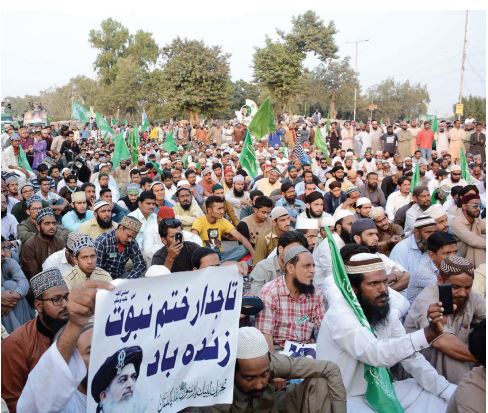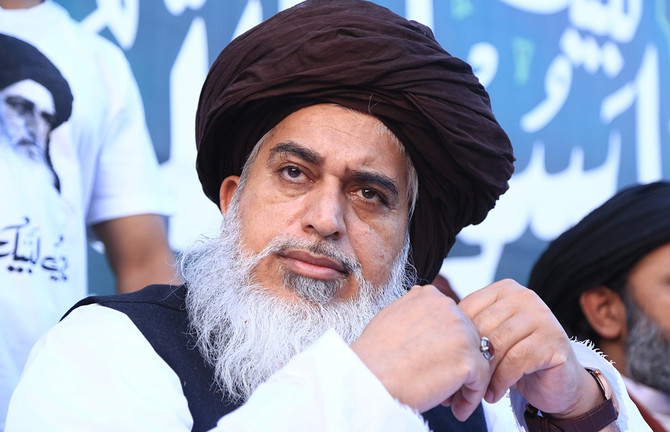With the announcement of the general election schedule, polls are less than two months away. The ongoing crackdown on PTI and the beleaguered state of the Muhajir parties – MQM and PSP – presents an ideal opportunity for the Islamists to stake their political claims, in particular the TLP which managed to win two Sindh Assembly seats in 2018 from Hub and Lyari.
This article briefly examines the recent political history of Karachi and identifies some of the reasons why TLP has emerged as a popular oppositional force.
In the late 1970s a gradual process of ethnic polarization started in Karachi with some of the initial concerns based around the making of Sindhi language compulsory at school which ignited Muhajir salariat outrage. These concerns were to later culminate in the formation of the All-Pakistan Muhajir Students Organization which eventually became the Muhajir Qaumi Movement led by the partly enigmatic and partly charismatic personality of Altaf Hussain. The fault lines between Sindhi and Muhajir communities, compounded by the third fracture stemming from Pashtun migration to Karachi, became increasingly pronounced.
While this demographic shift had commenced in the late 1960s, it gained significant momentum, particularly owing to the influx of Pashtun migrants to Karachi. The acceleration in migration owed particularly to anti-Soviet Jihad in Afghanistan, and subsequent refugee exodus. Even though other ethnic communities such as Baloch, Bengali and Biharis constituted a significant proportion of Karachi’s population, it was the aforementioned tripartite ethnic polarization that became the dominant tendency in Karachi’s politics by 1980s.
In the decades that followed, MQM was able to establish a vice-like grip on the city and its politics. The politics of Muhajir grievances developed into the dominant idiom of political expression even for periodic challengers like the Jamaat-e-Islami. From the late 1980s to around 2015, no meaningful political challenge emerged beyond the level of local government. In this way, MQM was able to leverage its dominance in Karachi – as well as Hyderabad – to become a junior partner in most coalition governments at the center.
This was also the period in Karachi that Laurent Gayer has characterized in terms of ‘ordered disorder’: crime, criminality, land grabs, corruption, sectarianism, and ethnic violence was rampant, exacerbated further by complete absence of meaningful governance. Politics came to represent chaos – fitna. In this context, it is not at all surprising for a completely apolitical proselytizing community to attract an enormous following that became the enabling condition for the eventual political impact of TLP.
Dawat-e-Islami, the Barelvi proselytizing organization headquartered in Karachi, commands hundreds of thousands of followers under the congenial leadership of Maulana Ilyas Attar Qadri. DeT offered a moral respite from the chaos outside amidst the everyday brutalities, criminalities, the chaos, the confusion and the entire mess of the ‘ordered disorder’. Not only did it offer a refuge from this outside chaos through its nightly and weekly congregations, it also shifted the moral and the ethical center of gravity to the self – a self it regards as being capable of perfection and remaining unblemished even in the face of dirty, polluted and chaotic ‘outside’.
In addition to this, it was able to cultivate Barelvi pious disposition, outlook, and discourse revolving around theologically based ideological orientation and that resonated well with the Barelvi politics of TLP. However, this potential social base could only be operationalized once the MQM was systematically weakened, opening up political arena to new contenders.
Historically, there have been several rounds of state crackdowns on the MQM, yet the most significant one began in 2015. Apart from targeting the party organizers down to the unit and sector levels, it effectively sidelined Altaf Hussain. Sans Altaf, the Muhajir politics has wavered between varied orientations that lack the reverence, the authority and the sense of legitimacy characteristic of his personality. The systematic weakening of MQM had the effect of opening up politics in Karachi, most clearly evident during the 2018 general election, with the upper classes and the elite voting for PTI, while the Muhajir – Urdu speaking and the more recent Saraiki and Punjabi migrants – voting for TLP.

The unsurprising rallying of Karachi’s upper classes and elite around PTI can be attributed to two factors: 1) the party’s emphasis on issues of transparent governance, anti-corruption, and anti-dynastic politics; 2) being led by the worldly, ‘educated’ and charismatic Imran Khan. On the other hand, the manner in which TLP was able to galvanize support across most of the working-class and lower-middle class localities despite the presence of MQM and PSP was certainly nowhere near as expected.
How did TLP become such an attractive proposition? In part, the answer lies in its successful acquisition of a significant share of protest vote. The TLP emerged as a political party only a few months before, after having been thrust into political mainstream with the staging of the Faizabad Dharna. However, there are several other important convergences to highlight. The role of the apolitical Dawat-e-Islami is also particularly noteworthy, in that it emphasized, popularized and strengthened Barelvi religious identity. This made some devotees particularly receptive to Barelvi religious idiom of politics predicated on meticulous public performances of piety that served as a political extension of Barelviness.
This also help explains the increasingly pious orientation of previously apolitical Memon business communities that in affect built upon but also transformed its associations of piety with Dawat-e-Islami and TLP into a general idiom of politics. Similarly, it also shines light on the appeal of someone like Khadim Rizvi to non-Punjabi petty bourgeoisie. Nevertheless, it is important to stress that this does not imply any automatic transference from piety to politics. It is only a very strong correlation. Most TLP activists have been part of Dawat-e-Islami in one capacity or another, either as devotees or as followers more generally.
It is also important to highlight four other broad segments that form the core of the TLP support base: beleaguered sections of Sunni Tehreek, the MQM, alongside disenfranchised youth and graduates of madrassas. TLP has acted as a refuge for these groups, while also offering a sense of political direction and empowerment to them. The organizational units of TLP in Karachi reflect this diverse composition of its social base. It features seminary-trained clerics as well as lay folks that include mixture of former activists of Sunni Tehreek and MQM, alongside disenfranchised youth and members of the petty bourgeoisie.
Apart from the usual thana, katcheri politics, TLP offers a unique blend of activist and vigilante possibilities that get manifested in forms of blood camp here, property occupation there and blasphemy spotting everywhere. At a moment of complete socio-economic breakdown, this politics represents a widely popular idiom of assertive outrage that has gained momentum in the lead up to the polls. This is also evidenced by the number of blasphemy related cases registered, desecrations of Ahmadi places of worship and the huge outpouring of activists on TLP protests on issues as diverse as desecrations of the Quran in Sweden and the pro-Palestine marches more recently.
In the lead-up to polls next year, this does not augur well for Karachi’s politics. The ongoing clampdown on PTI will most likely lead to limited voter turnouts in several constituencies as well as facilitate a general voter apathy with regards to electoral participation. In this context, it is entirely possible that elections in Karachi become reduced to a shoot off between remnants of the MQM-PSP combine and the Islamists represented by JI and TLP. The recent local body elections notwithstanding, in several bypolls in Karachi, TLP has shown its ability to showcase its support in low turnout contests It should not be surprising if TLP comes off with more than a handful of seats.
The writer teaches at Lahore University of Management Sciences (LUMS). This piece is based on fieldwork carried out in Karachi on TLP.



